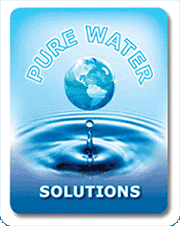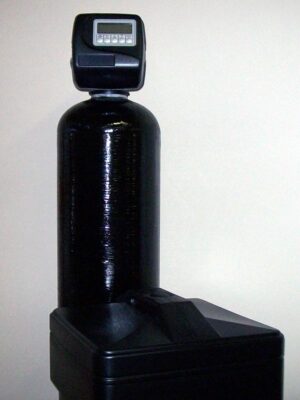Consider a filter if your water is…
- Is cloudy
- Tastes metallic or unpleasant
- Has rotten egg smell; Harbors a blackish colored bacteria that breeds in hot water heater
- Has additives such as chlorine and flouride
- Makes laundry red
- Leaves black stains, blue stains
- Creates colored rings in the bathtub, sink and washing machine
- Stains both ice cubes and laundry with a yellowish color
- Leaves thick, scaly film on bathtub and on shower walls
- Could be contaminated with lead, radon, microbes, pesticides, arsenic, bacteria, or parasites
There are more than 2100 known drinking water contaminants that may be present in tap water, including several known poisons. Drinking clean, filtered water helps protect your body from disease and leads to overall greater health. Pure water is especially important for children.
But before choosing to filter, you need to know what, if any, contaminants are in your water. Once you know what pollutants are in your water, you can best decide what kind of filter you will need to remove them.
Free Water Test in Southern Oregon
If you have concerns about the quality of your water, call Pure Water Solutions.
100% FREE, no-obligation water analysis
541-890-2751
CLICK TO CALL
We’ll test your water for contaminants and provide you with a free written report.
If your water quality turns out to be acceptable, you may decide that you don’t need a filtration system and that’s fine. Your water analysis is still free and at least you’ll know what’s in your water.

If you decide that you want a water filtration system, Pure Water Solutions offers low cost, easy-to-maintain water filtration systems, both whole house and under-the-sink.
Our systems will remove virtually any contaminant to provide pure, perfect, better-than-bottled water quality for you and your family.
Plus, Pure Water Solutions systems come with a 100% money back performance guarantee!
Learn more about our guarantee »
Why offer Free Water Testing?
At Pure Water Solutions, we are nuts about pure water. We make our high quality systems available at affordable pricing because we would like every family, home and business in Southern Oregon to enjoy safe, great tasting, and pure water.
Read how we helped this Oregon family who had an “odor problem”:
“Since August we had been dealing with water that had an odor. Our 8 year old grandson wondered why grandma’s water smelled funny. This was the first time living in a home with well water but Ross explained everything to help us understand better. He had a specific system for our home and offered a money back guarantee. He is available whenever we have questions or concerns. He made 2 different appointments and was on time both times. He even hauled away the old equipment. We are now experiencing odor free water.” ~ Peter R.
What’s in your Well Water?
Groundwater normally looks clear and clean because the ground naturally filters out particulate matter. But even though it looks pure, the water can have be contaminated with chemicals and other contaminants such as metals, salts, pesticides, nitrites, bacteria and more. The only way to be what’s in your water is to test it.
Contaminants can be natural or human-induced
As groundwater flows through the ground, metals such as iron and manganese are dissolved and may later be found in high concentrations in the water. Industrial discharges, urban activities, agriculture, groundwater pumping, and disposal of waste all can affect groundwater quality.
Contaminants can be human-induced, as from leaking fuel tanks or toxic chemical spills. Pesticides and fertilizers applied to lawns and crops can accumulate and migrate to the water table. Leakage from septic tanks and/or waste-disposal sites also can introduce bacteria to the water, and pesticides and fertilizers that seep into farmed soil can eventually end up in water drawn from a well. Or, a well might have been placed in land that was once used for something like a garbage or chemical dump site.
In any case, if you use your own well to supply drinking water to your home, it is wise to have your well water tested for contaminates.
Call Pure Water Solutions for a 100% FREE, no-obligation water analysis.
541-890-2751
CLICK TO CALL
Inorganic contaminants found in groundwater
| Contaminant | Sources to groundwater | Potential health and other effects |
|---|---|---|
| Aluminum | Occurs naturally in some rocks and drainage from mines. | Can precipitate out of water after treatment, causing increased turbidity or discolored water. Detrimental to health. |
| Antimony | Enters environment from natural weathering, industrial production, municipal waste disposal, and manufacturing of flame retardants, ceramics, glass, batteries, fireworks, and explosives. | Decreases longevity, alters blood levels of glucose and cholesterol in laboratory animals exposed at high levels over their lifetime. |
| Arsenic | Enters environment from natural processes, industrial activities, pesticides, and industrial waste, smelting of copper, lead, and zinc ore. | Causes acute and chronic toxicity, liver and kidney damage; decreases blood hemoglobin. A carcinogen. |
| Barium | Occurs naturally in some limestones, sandstones, and soils in the eastern United States. | Can cause a variety of cardiac, gastrointestinal, and neuromuscular effects. Associated with hypertension and cardiotoxicity in animals. |
| Cadmium | Found in low concentrations in rocks, coal, and petroleum and enters the groundwater and surface water when dissolved by acidic waters. May enter the environment from industrial discharge, mining waste, metal plating, water pipes, batteries, paints and pigments, plastic stabilizers, and landfill leachate. | Replaces zinc biochemically in the body and causes high blood pressure, liver and kidney damage, and anemia. Destroys testicular tissue and red blood cells. Toxic to aquatic biota. |
| Chloride | May be associated with the presence of sodium in drinking water when present in high concentrations. Often from saltwater intrusion, mineral dissolution, industrial and domestic waste. | Deteriorates plumbing, water heaters, and municipal water-works equipment at high levels.Above secondary maximum contaminant level, taste becomes noticeable. |
| Chromium | Enters environment from old mining operations runoff and leaching into groundwater, fossil-fuel combustion, cement-plant emissions, mineral leaching, and waste incineration. Used in metal plating and as a cooling-tower water additive. | Chromium III is a nutritionally essential element. Chromium VI is much more toxic than Chromium III and causes liver and kidney damage, internal hemorrhaging, respiratory damage, dermatitis, and ulcers on the skin at high concentrations. |
| Copper | Enters environment from metal plating, industrial and domestic waste, mining, and mineral leaching. | Can cause stomach and intestinal distress, liver and kidney damage, anemia in high doses. Imparts an adverse taste and significant staining to clothes and fixtures. Essential trace element but toxic to plants and algae at moderate levels. |
| Cyanide | Often used in electroplating, steel processing, plastics, synthetic fabrics, and fertilizer production; also from improper waste disposal. | Poisoning is the result of damage to spleen, brain, and liver. |
| Dissolved solids | Occur naturally but also enters environment from man-made sources such as landfill leachate, feedlots, or sewage. A measure of the dissolved "salts" or minerals in the water. May also include some dissolved organic compounds. |
May have an influence on the acceptability of water in general. May be indicative of the presence of excess concentrations of specific substances not included in the Safe Water Drinking Act, which would make water objectionable. High concentrations of dissolved solids shorten the life of hot water heaters. |
| Fluoride | Occurs naturally or as an additive to municipal water supplies; widely used in industry. | Decreases incidence of tooth decay but high levels can stain or mottle teeth. Causes crippling bone disorder (calcification of the bones and joints) at very high levels. |
| Hardness | Result of metallic ions dissolved in the water; reported as concentration of calcium carbonate. Calcium carbonate is derived from dissolved limestone or discharges from operating or abandoned mines. | Decreases the lather formation of soap and increases scale formation in hot-water heaters and low-pressure boilers at high levels. |
| Iron | Occurs naturally as a mineral from sediment and rocks or from mining, industrial waste, and corroding metal. | Imparts a bitter astringent taste to water and a brownish color to laundered clothing and plumbing fixtures. |
| Lead | Enters environment from industry, mining, plumbing, gasoline, coal, and as a water additive. | Affects red blood cell chemistry; delays normal physical and mental development in babies and young children. Causes slight deficits in attention span, hearing, and learning in children. Can cause slight increase in blood pressure in some adults. Probable carcinogen. |
| Manganese | Occurs naturally as a mineral from sediment and rocks or from mining and industrial waste. | Causes aesthetic and economic damage, and imparts brownish stains to laundry. Affects taste of water, and causes dark brown or black stains on plumbing fixtures. Relatively non-toxic to animals but toxic to plants at high levels. |
| Mercury | Occurs as an inorganic salt and as organic mercury compounds. Enters the environment from industrial waste, mining, pesticides, coal, electrical equipment (batteries, lamps, switches), smelting, and fossil-fuel combustion. | Causes acute and chronic toxicity. Targets the kidneys and can cause nervous system disorders. |
| Nickel | Occurs naturally in soils, groundwater, and surface water. Often used in electroplating, stainless steel and alloy products, mining, and refining. | Damages the heart and liver of laboratory animals exposed to large amounts over their lifetime. |
| Nitrate (as nitrogen) | Occurs naturally in mineral deposits, soils, seawater, freshwater systems, the atmosphere, and biota. More stable form of combined nitrogen in oxygenated water. Found in the highest levels in groundwater under extensively developed areas. Enters the environment from fertilizer, feedlots, and sewage. | Toxicity results from the body’s natural breakdown of nitrate to nitrite. Causes "bluebaby disease," or methemoglobinemia, which threatens oxygen-carrying capacity of the blood. |
| Nitrite (combined nitrate/nitrite) | Enters environment from fertilizer, sewage, and human or farm-animal waste. | Toxicity results from the body’s natural breakdown of nitrate to nitrite. Causes "bluebaby disease," or methemoglobinemia, which threatens oxygen-carrying capacity of the blood. |
| Selenium | Enters environment from naturally occurring geologic sources, sulfur, and coal. | Causes acute and chronic toxic effects in animals–"blind staggers" in cattle. Nutritionally essential element at low doses but toxic at high doses. |
| Silver | Enters environment from ore mining and processing, product fabrication, and disposal. Often used in photography, electric and electronic equipment, sterling and electroplating, alloy, and solder. Because of great economic value of silver, recovery practices are typically used to minimize loss. | Can cause argyria, a blue-gray coloration of the skin, mucous membranes, eyes, and organs in humans and animals with chronic exposure. |
| Sodium | Derived geologically from leaching of surface and underground deposits of salt and decomposition of various minerals. Human activities contribute through de-icing and washing products. |
Can be a health risk factor for those individuals on a low-sodium diet. |
| Sulfate | Elevated concentrations may result from saltwater intrusion, mineral dissolution, and domestic or industrial waste. | Forms hard scales on boilers and heat exchangers; can change the taste of water, and has a laxative effect in high doses. |
| Thallium | Enters environment from soils; used in electronics, pharmaceuticals manufacturing, glass, and alloys. | Damages kidneys, liver, brain, and intestines in laboratory animals when given in high doses over their lifetime. |
| Zinc | Found naturally in water, most frequently in areas where it is mined. Enters environment from industrial waste, metal plating, and plumbing, and is a major component of sludge. | Aids in the healing of wounds. Causes no ill health effects except in very high doses. Imparts an undesirable taste to water. Toxic to plants at high levels. |
Organic contaminants found in groundwater
| Contaminant | Sources to groundwater | Potential health and other effects |
|---|---|---|
| Volatile organic compounds | Enter environment when used to make plastics, dyes, rubbers, polishes, solvents, crude oil, insecticides, inks, varnishes, paints, disinfectants, gasoline products, pharmaceuticals, preservatives, spot removers, paint removers, degreasers, and many more. | Can cause cancer and liver damage, anemia, gastrointestinal disorder, skin irritation, blurred vision, exhaustion, weight loss, damage to the nervous system, and respiratory tract irritation. |
| Pesticides | Enter environment as herbicides, insecticides, fungicides, rodenticides, and algicides. | Cause poisoning, headaches, dizziness, gastrointestinal disturbance, numbness, weakness, and cancer. Destroys nervous system, thyroid, reproductive system, liver, and kidneys. |
| Plasticizers, chlorinated solvents, benzo[a]pyrene, and dioxin | Used as sealants, linings, solvents, pesticides, plasticizers, components of gasoline, disinfectant, and wood preservative. Enters the environment from improper waste disposal, leaching runoff, leaking storage tank, and industrial runoff. | Cause cancer. Damages nervous and reproductive systems, kidney, stomach, and liver. |
Microbiological contaminants found in groundwater
| Contaminant | Sources to groundwater | Potential health and other effects |
|---|---|---|
| Coliform bacteria | Occur naturally in the environment from soils and plants and in the intestines of humans and other warm-blooded animals. Used as an indicator for the presence of pathogenic bacteria, viruses, and parasites from domestic sewage, animal waste, or plant or soil material. | Bacteria, viruses, and parasites can cause polio, cholera, typhoid fever, dysentery, and infectious hepatitis. |
Physical characteristics of groundwater
| Turbidity | Caused by the presence of suspended matter such as clay, silt, and fine particles of organic and inorganic matter, plankton, and other microscopic organisms. A measure how much light can filter through the water sample. | Objectionable for aesthetic reasons. Indicative of clay or other inert suspended particles in drinking water. May not adversely affect health but may cause need for additional treatment. Following rainfall, variations in groundwater turbidity may be an indicator of surface contamination. |
| Color | Can be caused by decaying leaves, plants, organic matter, copper, iron, and manganese, which may be objectionable. Indicative of large amounts of organic chemicals, inadequate treatment, and high disinfection demand. Potential for production of excess amounts of disinfection byproducts. | Suggests that treatment is needed. No health concerns. Aesthetically unpleasing. |
| pH | Indicates, by numerical expression, the degree to which water is alkaline or acidic. Represented on a scale of 0-14 where 0 is the most acidic, 14 is the most alkaline, and 7 is neutral. | High pH causes a bitter taste; water pipes and water-using appliances become encrusted; depresses the effectiveness of the disinfection of chlorine, thereby causing the need for additional chlorine when pH is high. Low-pH water will corrode or dissolve metals and other substances. |
| Odor | Certain odors may be indicative of organic or non-organic contaminants that originate from municipal or industrial waste discharges or from natural sources. | |
| Taste | Some substances such as certain organic salts produce a taste without an odor and can be evaluated by a taste test. Many other sensations ascribed to the sense of taste actually are odors, even though the sensation is not noticed until the material is taken into the mouth. |
Some information on this page is from Waller, Roger M., Ground Water and the Rural Homeowner, Pamphlet
Call Pure Water
541-890-2751
To schedule FREE on site water testing

